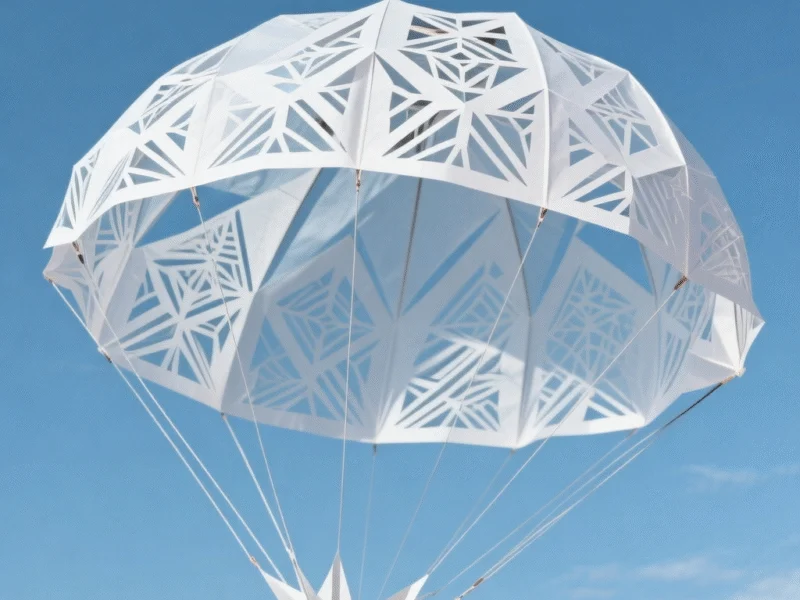A New Parachute Concept Born from Ancient Art
Engineers at Polytechnique Montréal have developed a revolutionary parachute design using principles from kirigami, the Japanese art of paper cutting. This innovative approach transforms a simple plastic sheet into a fully functional parachute through precise cutting patterns, creating a device that’s both remarkably simple and highly effective.
How Kirigami Transforms Plastic into Parachutes
Kirigami modifies material properties by introducing strategic folds and cuts into flat sheets. While commonly associated with paper crafts and medical devices, this technique had never been applied to parachute design until now. The research team, led by professors David Mélançon and Frédérick Gosselin, created a “closed-loop” kirigami pattern that gives ordinary plastic sheeting entirely new mechanical capabilities.
When released with any attached weight, the cut plastic sheet automatically forms an inverted bell shape during descent, demonstrating exceptional stability and predictable flight characteristics that conventional parachutes often lack.
Superior Performance Characteristics
The kirigami parachute offers several distinct advantages over traditional designs. According to Professor Mélançon, “One advantage of this parachute is that it quickly stabilizes and doesn’t pitch, regardless of the release angle. Unlike conventional parachutes, it follows a strict ballistic descent trajectory.”
This predictable behavior makes the design particularly valuable for applications requiring precise landing accuracy. The researchers confirmed these properties through comprehensive testing including numerical simulations, wind-tunnel experiments, and real-world drops from drones.
Practical Applications and Manufacturing Advantages
The research team sees immediate potential for humanitarian aid delivery, where low-cost, reliable parachutes could transport water, food, and medicine to remote areas. The space exploration sector also shows interest, particularly for Mars missions where predictable descent trajectories are crucial.
Manufacturing simplicity represents another significant advantage. “We made these parachutes by laser cutting, but a simple die-cutting press would also do the trick,” Mélançon explains. “The parachute is seamless and attaches to the payload by a single suspension line, making it easy to use and deploy.”
Future Developments and Scaling Potential
Perhaps most remarkably, the parachute’s performance remains consistent even when scaled to larger sizes. Professor Gosselin notes that “the parachute’s behaviour doesn’t change even when the device size is augmented,” suggesting potential for much larger applications.
The team continues to explore new cutting patterns to achieve even more sophisticated flight characteristics. “We want to change patterns to go even further: parachutes could descend in a spiral, or glide before dropping,” Mélançon reveals. “We’d also like to vary descent trajectory based on payload, enabling cargo sorting during descent.”
This groundbreaking research, originally detailed in a Nature publication, represents a significant step forward in parachute technology and demonstrates how traditional art forms can inspire modern engineering solutions. The complete study and additional technical details were first reported by engineering innovation news sources covering this remarkable development.
